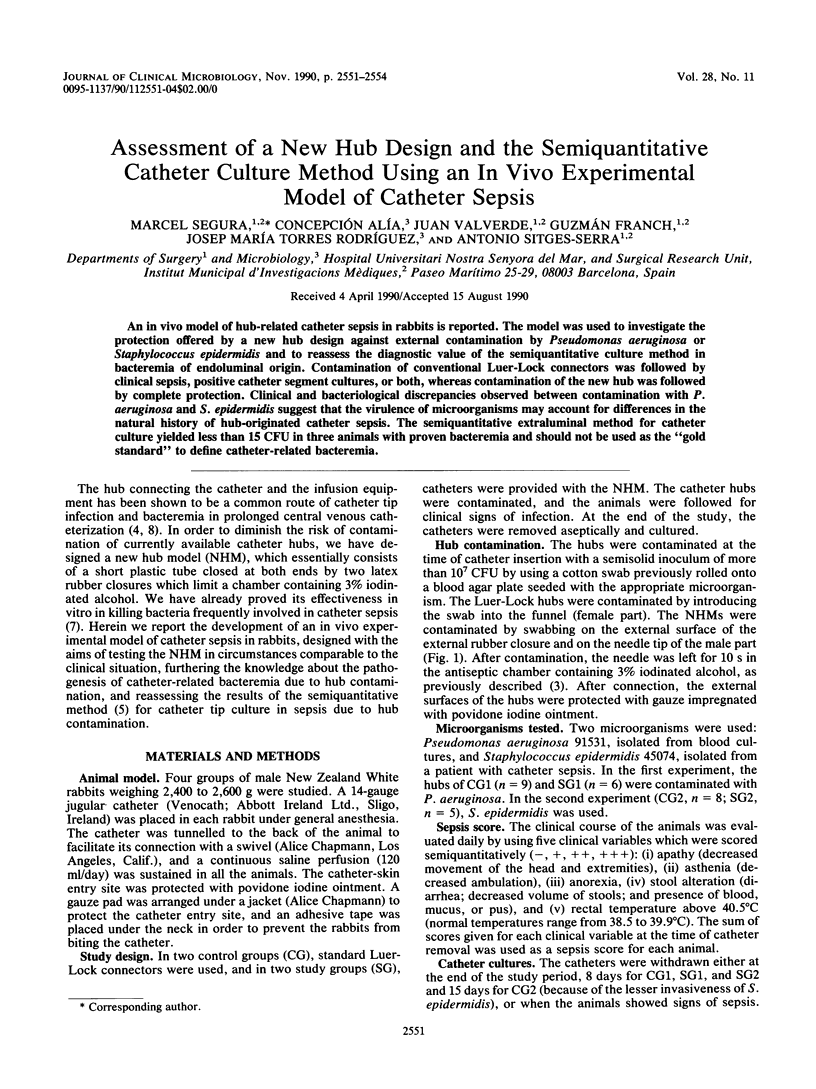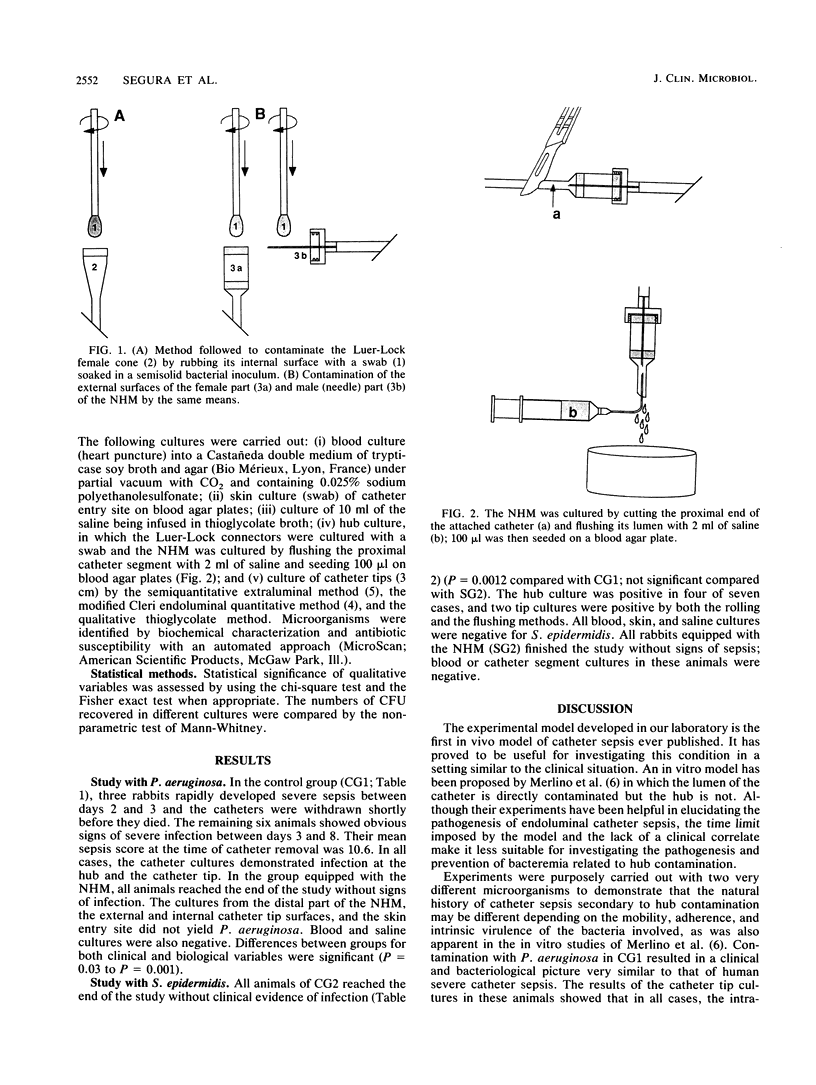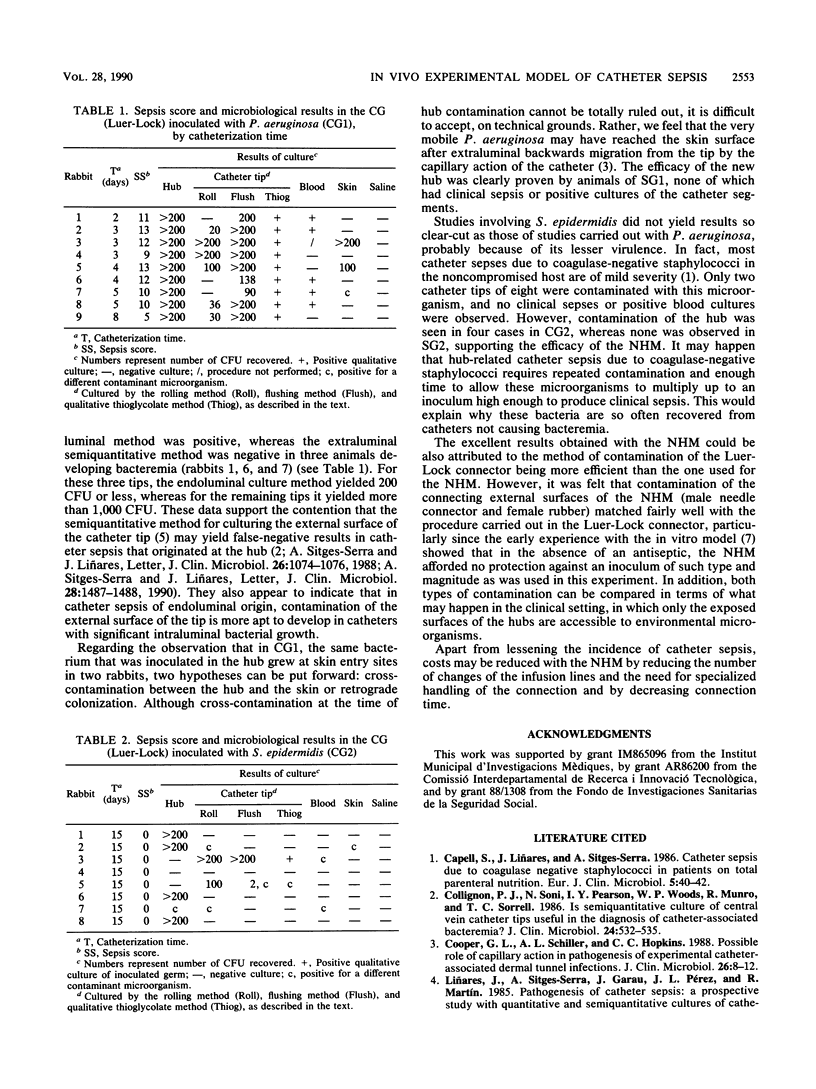Abstract
An in vivo model of hub-related catheter sepsis in rabbits is reported. The model was used to investigate the protection offered by a new hub design against external contamination by Pseudomonas aeruginosa or Staphylococcus epidermidis and to reassess the diagnostic value of the semiquantitative culture method in bacteremia of endoluminal origin. Contamination of conventional Luer-Lock connectors was followed by clinical sepsis, positive catheter segment cultures, or both, whereas contamination of the new hub was followed by complete protection. Clinical and bacteriological discrepancies observed between contamination with P. aeruginosa and S. epidermidis suggest that the virulence of microorganisms may account for differences in the natural history of hub-originated catheter sepsis. The semiquantitative extraluminal method for catheter culture yielded less than 15 CFU in three animals with proven bacteremia and should not be used as the "gold standard" to define catheter-related bacteremia.
Full text
PDF



Selected References
These references are in PubMed. This may not be the complete list of references from this article.
- Capell S., Liñares J., Sitges-Serra A. Catheter sepsis due to coagulase-negative staphylococci in patients on total parenteral nutrition. Eur J Clin Microbiol. 1986 Feb;5(1):40–42. doi: 10.1007/BF02013459. [DOI] [PubMed] [Google Scholar]
- Collignon P. J., Soni N., Pearson I. Y., Woods W. P., Munro R., Sorrell T. C. Is semiquantitative culture of central vein catheter tips useful in the diagnosis of catheter-associated bacteremia? J Clin Microbiol. 1986 Oct;24(4):532–535. doi: 10.1128/jcm.24.4.532-535.1986. [DOI] [PMC free article] [PubMed] [Google Scholar]
- Cooper G. L., Schiller A. L., Hopkins C. C. Possible role of capillary action in pathogenesis of experimental catheter-associated dermal tunnel infections. J Clin Microbiol. 1988 Jan;26(1):8–12. doi: 10.1128/jcm.26.1.8-12.1988. [DOI] [PMC free article] [PubMed] [Google Scholar]
- Maki D. G., Weise C. E., Sarafin H. W. A semiquantitative culture method for identifying intravenous-catheter-related infection. N Engl J Med. 1977 Jun 9;296(23):1305–1309. doi: 10.1056/NEJM197706092962301. [DOI] [PubMed] [Google Scholar]
- Merlino R., Gaillard J. L., Fauchere J. L., Chaumont P., Droy-Lefaix M. T., Descamps P., Ricour C., Veron M. In vitro quantitative model of catheter infection during simulated parenteral nutrition. J Clin Microbiol. 1988 Sep;26(9):1659–1664. doi: 10.1128/jcm.26.9.1659-1664.1988. [DOI] [PMC free article] [PubMed] [Google Scholar]
- Segura M., Alía C., Oms L., Sancho J. J., Torres-Rodríguez J. M., Sitges-Serra A. In vitro bacteriological study of a new hub model for intravascular catheters and infusion equipment. J Clin Microbiol. 1989 Dec;27(12):2656–2659. doi: 10.1128/jcm.27.12.2656-2659.1989. [DOI] [PMC free article] [PubMed] [Google Scholar]
- Sitges-Serra A., Linares J., Garau J. Catheter sepsis: the clue is the hub. Surgery. 1985 Mar;97(3):355–357. [PubMed] [Google Scholar]


